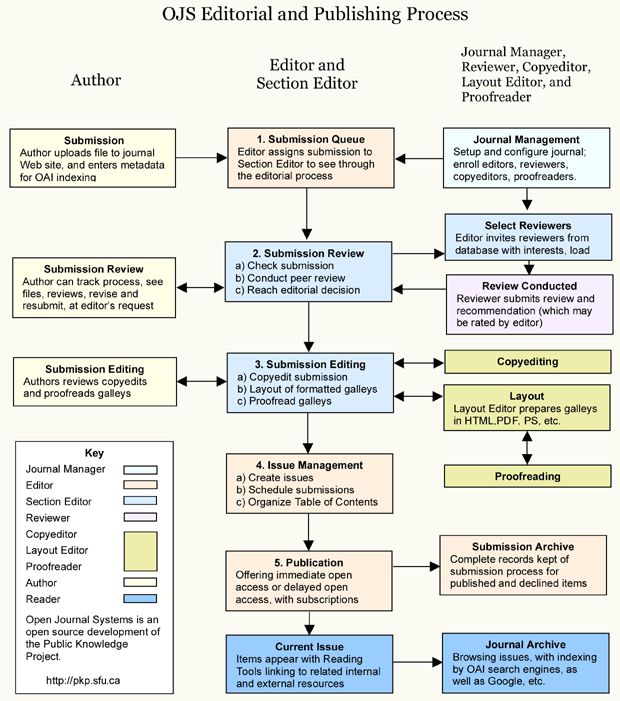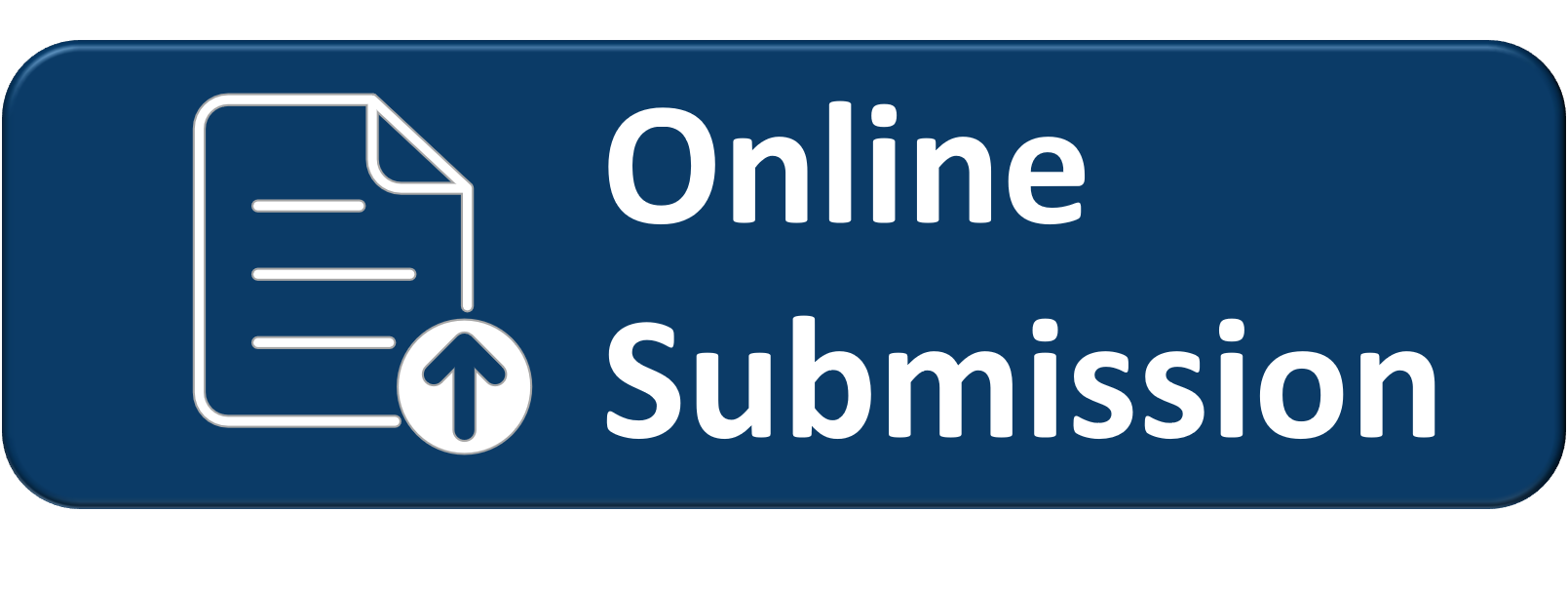- Home
- About the Journal
- Submissions
Submissions
Registration and login are required to submit items online and to check the status of current submissions.
Already have a Username/Password for Jurnal Sains Materi Indonesia?
Go to Login
Author Guidelines
General Information about Indonesian Journal of Materials Science (Jusami)
1. Journal scope
The topics discussed in Indonesian Journal of Materials Science are research & development results in:
- Material science and engineering
- Technological innovations and applications in industry based on materials such as polymers, ceramics, composites, metals or metal alloys, which are related to mechanical, magnetic, physical, dielectric or electronic properties (superconductivity, semiconductivity, superionic conductivity, etc.) with discussion includes:
- synthesis and modification and development of methods
- testing and characterization
- simulation and modeling
- nuclear engineering and its application in material science, etc.
2. Originality and novelty
The submitted text must be
- Own work / not the result of plagiarism
- Not rewriting without updates and novelty
- Shows the current status supported by an adequate library
3. Systematic articles
Manuscripts must include the following parts (in order):
- Article Title
The title should accurately, clearly, and concisely reflect the emphasis and content of the paper. The title is capitalize each word and not more than 14 words. - Abstract
Abstract is written in English include background, methodology, the results and conclusions. The abstract should be brief and clear, not exceeding than 200 words. Do not include art work, tables, elaborate equations or references. - Keywords
maximum 5 words with the first word is the most important word. Keyword 1, Keyword 2, Keyword 3, Keyword 4, Keyword 5. - Introduction
Manuscripts written in English are typed with Microsoft Word for Windows on A4 size paper with right, left, top and bottom margins 30, 20, 30 and 25 mm respectively. The text is typed with the new romance font time, the distance between lines is 1 space, consisting of 2 columns, with a maximum of 8 spaces including images, tables and attachments.
The introductory section contains a brief ex-planation of the background and importance of the research problem, the current scientific status which is accompanied by a review of the latest references (lit-erature of the last 5 years), hypothesis and research objectives accompanied by a novelty statement from this study. The reference numbers are written in se-quence in square brackets, for example [1], or [2-5], or [1, 3]. - Theory (if any)
- Experimental Method
Materials and Instruments
Includes an explanation of the material used in the study by stating the brand or origin of the material obtained, written in sentence form. For example, sodium chloride, pro analyst (Sigma-Aldrich), battery waste obtained from the Z plant.
The equipment used in this paper mentioned the brand and type and its function in this experiment. For example Differential Scanning Calorimeter (DSC) Perkin Elmer Jade for thermal analysis, JEOL JEM 1400 Transmission Electron Microscope (TEM) for microstructure analysis.
Method and Procedure
Method and Procedure is in the form of sentences that describe the steps of the research conducted. - Results and Discussion
Discussion is carried out by referring to the objectives/hypotheses presented in INTRODUCTION and comparing with the results that already exist in the reference. At the end of the discussion, further research can be submitted.
Tables are numbered and must be referred sequentially according to the contents of the article. Each table must be accompanied by a title and if there is a measurement result, the unit must also be written in the title section. Tables are made without vertical dividing lines.
All images given numbers must be referenced in articles in sequence. Images are sent in the form of Excel files that can still be edited for graphics and in the form of bitmaps (BMP, JPEG, TIFF, GIF) for photos/images. Images in the form of bitmaps must have a resolution of more than 300 dpi, unless there is a resolution limit for scientific reasons. Labels/captions are given in separate parts of the image.
Graphs are given names and units on the axis. For example, Power (watts), Flow (amperage), Magnetization (emu / g), Coercivity, H (T). The writing of chemical equations and or mathematical agreements is carried out by the Microsoft Equation program and is numbered with Arabic numbers according to the discussion flow. Abbreviations must be completed at the beginning of loading in the article. - Conclusion
Conclusions are written in paragraph forms without numbering or indenting. - Acknowledgment
Acknowledgments are conveyed to funders and individuals who support the implementation of research and writing. - References (in IEEE citation style)
Use mendeley for creating list of references.
4. Adequacy of data and discussion
Manuscripts must include data with provisions including:
- The amount of data presented can be considered sufficient.
- Data is presented in graph/table form and has been given sufficient information
- Data presented has been accompanied by discussion
Procedure for Submission
Authors are requested to submit their papers electronically by using online submission via an Online Journal System (OJS). The authors should be registered as an author (click here to register) and login by using username and password (click here to login). The authors are requested to submit text, tables, and graphics in electronic form to this system. Authors who cannot provide an electronic version or have other circumstances that prevent online submissions must contact the Editor before submitting to discuss alternative options; email: jusami[at]batan.go.id. Publishers and Editors regret that they cannot consider submissions if the author does not follow this procedure.
The authors must refer to Jusami's papers for writing format and style (Please download Jusami's template and use as the template for initial manuscript submission). When submitting the manuscript, the author is required to attach a cover letter (already included in the template or can be downloaded separately here) at the step of uploading the supplementary files. The authors are also required to provide high-resolution images and graphics in the manuscript or can attach them as supplementary files. The author must understand OJS editorial and publishing process. The process can be seen in the figure below.

Submission Preparation Checklist
As part of the submission process, authors are required to check off their submission's compliance with all of the following items, and submissions may be returned to authors that do not adhere to these guidelines.
- The submission has not been previously published, nor is it before another journal for consideration (or an explanation has been provided in Comments to the Editor).
- The submission file is in OpenOffice, Microsoft Word, RTF, or WordPerfect document file format.
- Where available, URLs for the references have been provided.
- The text is single-spaced; uses a 12-point font; employs italics, rather than underlining (except with URL addresses); and all illustrations, figures, and tables are placed within the text at the appropriate points, rather than at the end.
- The text adheres to the stylistic and bibliographic requirements outlined in the Author Guidelines, which is found in About the Journal.
- If submitting to a peer-reviewed section of the journal, the instructions in Ensuring a Blind Review have been followed.
Copyright Notice
All articles published by JUSAMI are licensed under a Creative Commons Attribution-NonCommercial-ShareAlike 4.0 International License (CC BY-NC-SA 4.0).

WHICH STATES:
- Share, copy and redistribute the material in any medium or format
- Adapt, remix, transform, and build upon the material for any purpose, even commercially.
JUSAMI fully supports authors to share, disseminate and maximize the impact of their research and these rights.
AUTHORS HAVE THE RIGHT TO:
- Read, print, share and download
- Reuse portions or extracts from the article in other works
- Copy right permits anyone to copy, redistribute, remix, transfer and adapt the work provided the original work and source is appropriately cited.
Authors will have copyright but grant broad publishing and distribution rights to the publisher.
JUSAMI publisher allows viewing the website. But, JUSAMI publisher does not grant any rights in relation to this website or the material on this website. In other words, all other rights are reserved.
For the sake of clarity, you must not adapt, edit, change, transform, publish, republish, distribute, redistribute, broadcast, rebroadcast or show or play in public this website or the material on this website (in any form or media) without appropriately and conspicuously citing the original work and source or JUSAMI publisher prior written permission.
JUSAMI publisher safeguards its copyright very seriously.
If JUSAMI publisher notices that someone have used its copyright materials in contravention of the license above, JUSAMI publisher may bring legal proceedings against you seeking monetary damages and an injunction to stop using those materials. JUSAMI could also be ordered to pay legal costs for the same.
Privacy Statement
The names and email addresses entered in this journal site will be used exclusively for the stated purposes of this journal and will not be made available for any other purpose or to any other party.








.png)









